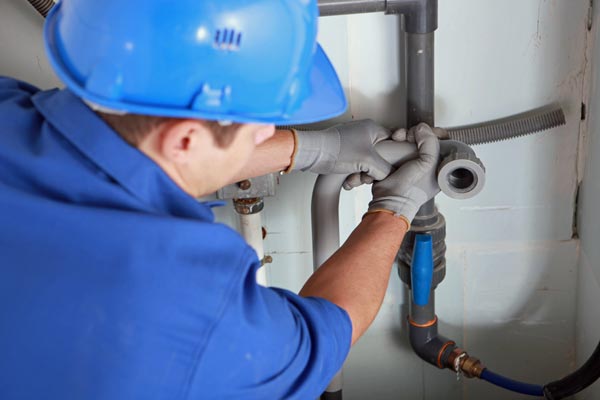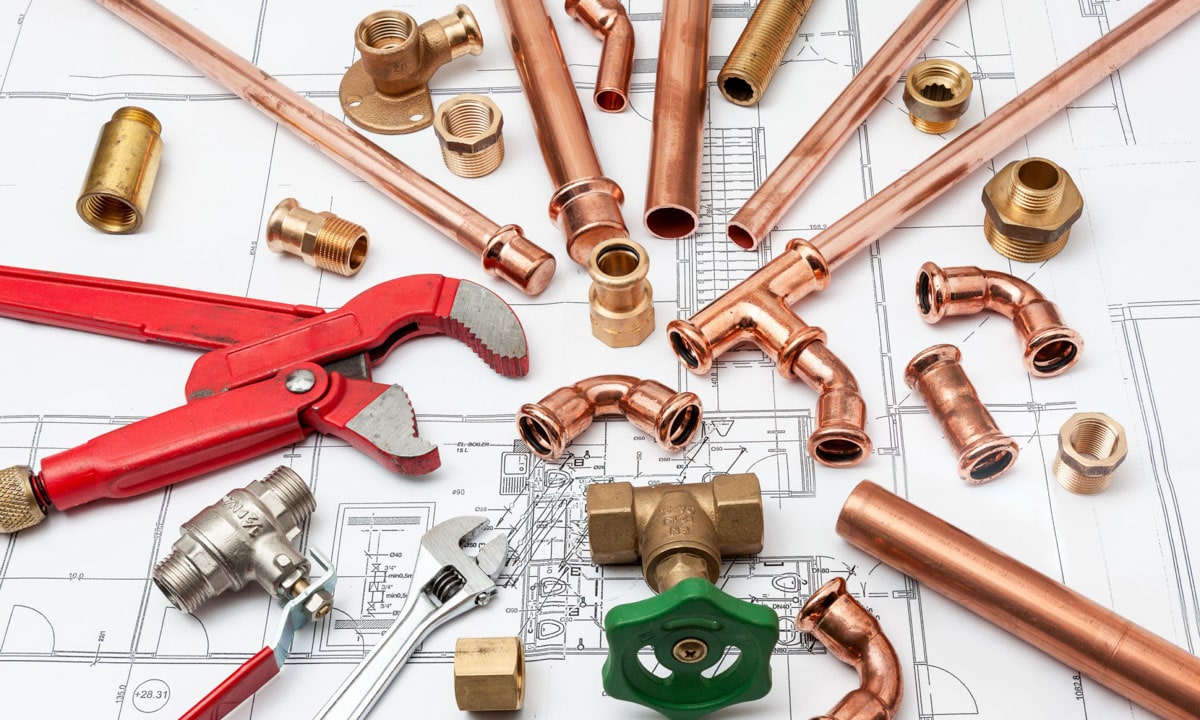How do you actually feel with regards to The Future of Plumbing: Trends and Innovations to Watch?

Introduction
The plumbing industry is undertaking a transformative stage driven by technological advancements and growing worries for sustainability and performance. This post discovers arising fads and innovations forming the future of plumbing.
Regulative Landscape
Governing structures play a crucial role fit the fostering of pipes technologies, with requirements and codes governing every little thing from water efficiency to item safety and security. As technologies remain to evolve, regulative bodies need to adjust to make sure consumer protection and ecological stewardship.
Future Outlook
The future of plumbing is characterized by continued advancement and combination with other markets such as IoT, renewable energy, and structure automation. By welcoming sustainable practices, leveraging arising modern technologies, and focusing on user-centric style, the plumbing market is positioned to attend to the advancing requirements of culture while decreasing its ecological impact.
Enhanced Reality in Plumbing
Enhanced Fact (AR) technology is reinventing plumbing by providing specialists with real-time aesthetic guidance for fixing and fixing jobs. AR-enabled clever glasses or mobile applications overlay electronic details onto the physical environment, helping plumbing technicians visualize pipe layouts, recognize covert leaks, and execute fixings with precision.
Influence of 3D Printing
The introduction of 3D printing has actually presented new possibilities in manufacturing pipes parts. From custom-designed fixtures to elaborate pipeline fittings, 3D printing allows for quick prototyping and on-demand production, decreasing lead times and enabling better customization in plumbing style.
Health And Wellness Features
In action to increased concerns for health and safety, pipes fixtures are incorporating attributes such as antimicrobial surfaces, touchless operation, and self-cleaning systems. These advancements not just boost hygiene yet additionally advertise customer convenience and comfort.
Hygiene-focused Fixtures
Touchless taps, self-sanitizing toilets, and antimicrobial surface areas are coming to be increasingly prevalent in property and business settings, reducing the threat of germ transmission and promoting a cleaner, healthier atmosphere.
Water Top Quality Monitoring
Improvements in water high quality tracking modern technologies allow homeowners to check the purity and security of their water supply in real-time. Smart water top quality sensors can find impurities, pH degrees, and temperature variants, equipping users to take proactive actions to ensure water safety and security.
Remote Pipes Solutions
Remote diagnostics and online support are transforming the way pipes services are delivered. Through video clip conferencing and remote access modern technologies, plumbings can fix problems, offer advice for DIY repair services, and even do remote evaluations, offering better access and comfort to homeowners.
Difficulties and Opportunities
While plumbing advancements hold tremendous promise, they additionally present difficulties such as information personal privacy issues, regulatory compliance, and the demand for workforce training. Attending to these obstacles needs partnership between industry stakeholders and regulative bodies to guarantee safe and liable application of new innovations.
Smart Pipes Equipments
Incorporating clever innovation right into pipes systems makes it possible for remote surveillance, leak detection, and automated maintenance. Smart sensing units and IoT (Web of Points) devices permit house owners and plumbers to monitor water use and spot problems in real-time, bring about much more reliable resource management and positive upkeep.
Water Effectiveness Solutions
With enhancing emphasis on water conservation, ingenious services are being developed to minimize water wastefulness in pipes systems. High-efficiency fixtures, greywater recycling systems, and smart irrigation controllers are amongst the innovations helping customers lower their water impact while maintaining convenience and convenience.
Sustainable Materials
The change towards sustainability encompasses plumbing materials, with an expanding preference for environment-friendly alternatives. Eco-friendly piping products, such as PEX (cross-linked polyethylene) and HDPE (high-density polyethylene), offer durability and resistance to rust without jeopardizing environmental stability.
Anticipating Maintenance
Anticipating maintenance strategies utilize information analytics and artificial intelligence formulas to anticipate and protect against pipes issues before they happen. By examining historical data and performance metrics, anticipating maintenance algorithms can determine patterns and anomalies, allowing positive interventions to stay clear of costly repair work and disturbances.
Final thought
In conclusion, the future of plumbing is specified by a merging of technology, sustainability, and user-centric design. By embracing wise solutions, sustainable products, and proactive maintenance techniques, the pipes market can enhance effectiveness, promote safety, and contribute to an extra sustainable future.
Plumbing Industry Trends You Need To Know
Smart technology in plumbing
Homeowners want to be able to manage their homes from their phones. The technology exists to make that happen. From smart toilets to leak detector devices, the whole plumbing system can be managed on an interconnected network made up of sensors, IoT devices, and machine learning algorithms.
This allows for wireless control to turn appliances on and off, automate routines, and access advanced monitoring to track water usage and flag potential issues. Smart technology streamlines water consumption, maintenance and energy usage, creating a more efficient system.
Green plumbing
The data analysis possible with smart technology not only improves convenience and cost-effectiveness but also fulfills a high-priority customer desire – sustainability. Consumers are very aware of their impact on the planet and want plumbing solutions to reduce damage and support sustainability. Eco-friendly plumbing solutions are already starting to emerge.
Customers can opt for low-flow toilets, water-saving faucets, and connections to sustainable energy sources. Beyond monitoring water consumption, customers can conserve water through the installation of greywater systems. This is a system that collects water that has been used but is still clean enough for some household uses such as toilet flushing.
Shorter product pipeline
To keep up with modern plumbing, plumbers need modern tools that enable them to complete jobs more efficiently. One technology making strides in this area is 3D printing. By 3D printing key plumbing fixtures, plumbers can reduce wait times even for specialized fixtures. It minimizes delays often seen in traditional manufacturing that frustrate customers and prevent plumbers from taking on more work.
Off-site repairs
Augmented reality is making a splash in many industries including plumbing. Plumbers can map a building online so they can explore the plumbing system through augmented reality, identifying areas of maintenance and repair completely digitally. This technology can be applied quite widely in plumbers’ work including planning installations and training new recruits. It’s safer, smarter and more efficient.
Low-footprint materials
Another way for plumbing companies to reduce their environmental footprint and meet the customer demand for sustainability is by using recycled materials in their work. The products they source and manufacture such as pipes, fixtures and faucets can be made from recycled materials. This saves the planet while being just as effective.
Onsite water purification
Additionally, plumbing companies can be advocates of water conservation and ease the financial and environmental concerns of customers by offering water purification systems. New water purification technology such as reverse osmosis systems and UV systems make it possible for homeowners and business owners to thoroughly cleanse water, removing contaminants onsite. This means the water can be safely reused in more ways than greywater can be, establishing a water recycling loop.
Tankless water heaters
Another innovation of modern plumbing is tankless water heaters. The idea is that the water is heated on demand as it runs through the system instead of being heated in a water tank. This is more energy efficient and therefore cost-effective and eco-friendly because water isn’t heated needlessly.

I am very excited about 7 Plumbing Industry Trends You Need To Know and I am hoping you appreciated my blog entry. So long as you liked our blog posting if you please don't forget to pass it around. I value reading our article about The Future of Plumbing: Trends and Innovations to Watch.
Visit Our Site